 "QUANTUM SHOT" #317
"QUANTUM SHOT" #317link
It was the Largest and Most Expensive in Soviet Space Exploration History - a grand effort and a noble, if not fully realized, dream
The frustrating end to this titanic program (it was canceled in 1993 due to the political situation and a lack of funding), and some resemblance of "Buran" to the American space shuttle, make it easy to forget the impressive results that it achieved: a fully operational line of shuttles with one (unmanned) space flight in 1988 and the development of the huge "Energia" launcher, which is fully capable of lifting 200 tonnes into orbit and delivering a payload to the Moon.
Click to enlarge most images
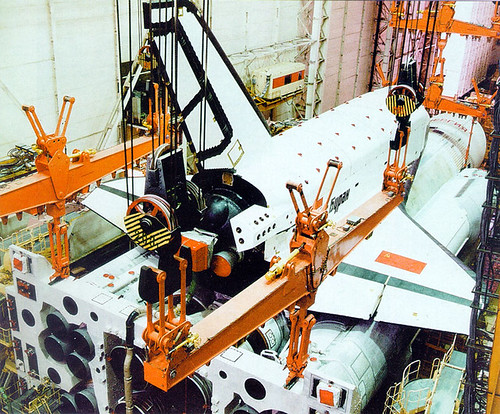

In other words, this program was something to behold while it lasted. Here we present rarely seen photographs of the various stages in "Buran"'s development and its trial flights, compiled from numerous Russian sites, including the most authoritative Buran.ru.
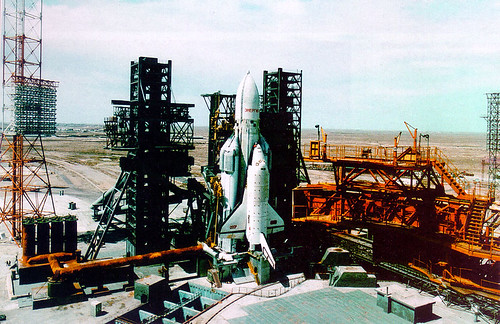


(images source: Ochevidec)
The exterior of "Buran" and Space Shuttle "Columbia" may look similar, but that's where the similarities end (it's easy to imagine that communist spies only managed to photograph a few early airframe designs). "Buran" was just a payload for the Energia launcher (with many other types of payloads possible). "Buran" had automatic landing capability and, being a well-behaved robot, landed itself in 1988 without any problems.
"Buran" carried by AN-225 "Mria" - an impressive combination
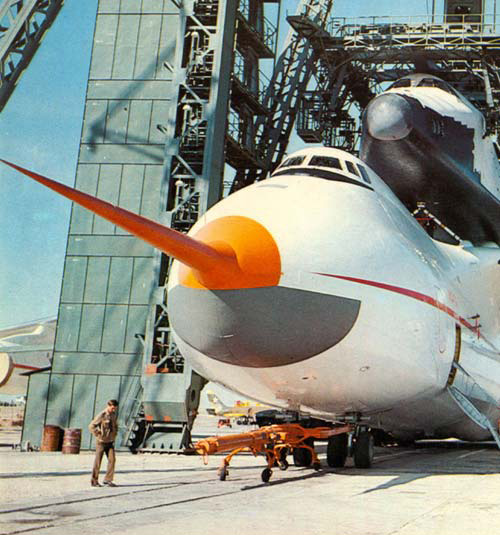

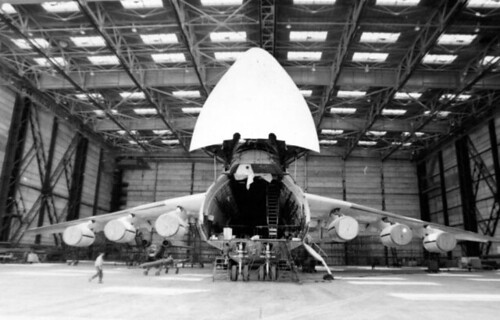
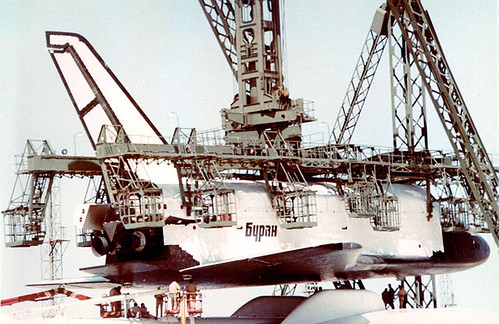
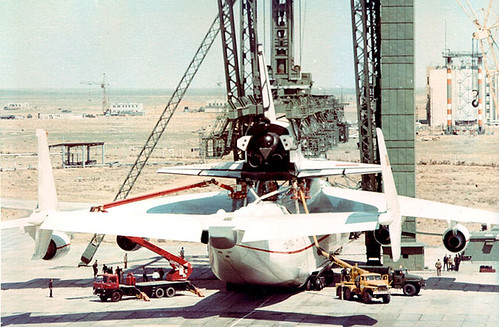
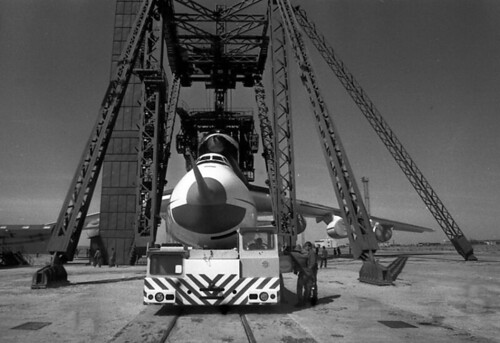

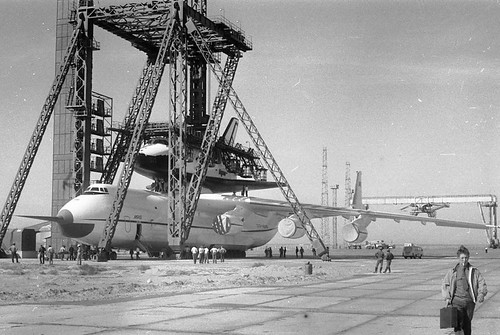
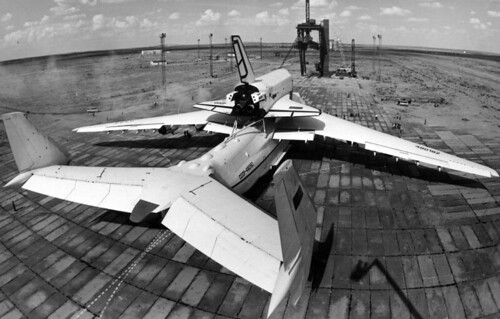
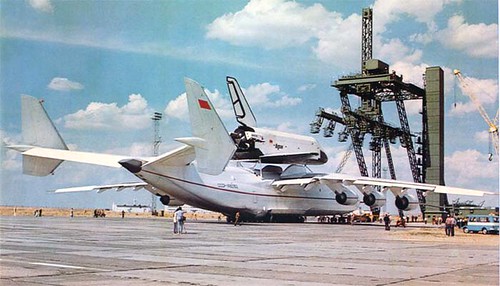
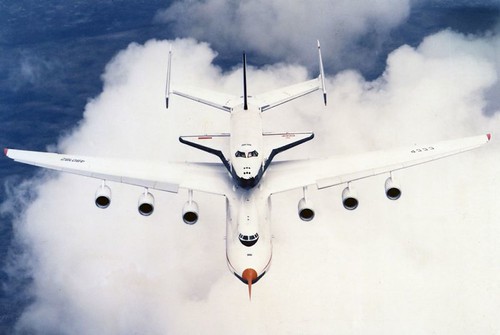
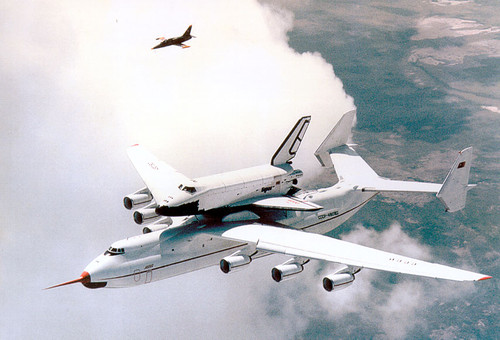
The heroic pilot team:
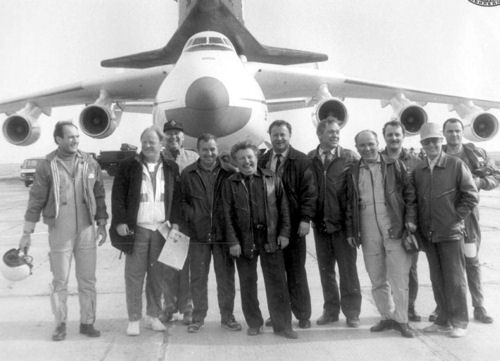
Some "Buran" close-ups:
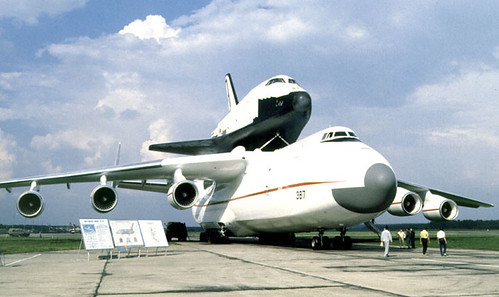

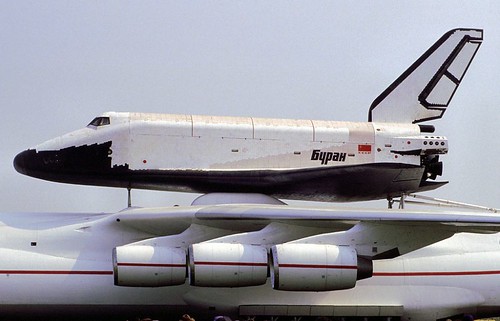

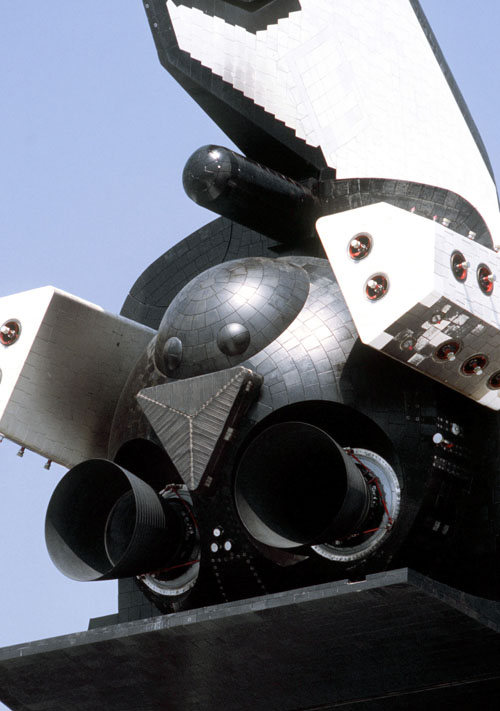
"Buran"'s cockpit
Climb inside to experience rickety-looking Soviet computer panels and monitors.
It takes guts to fly into space with these...


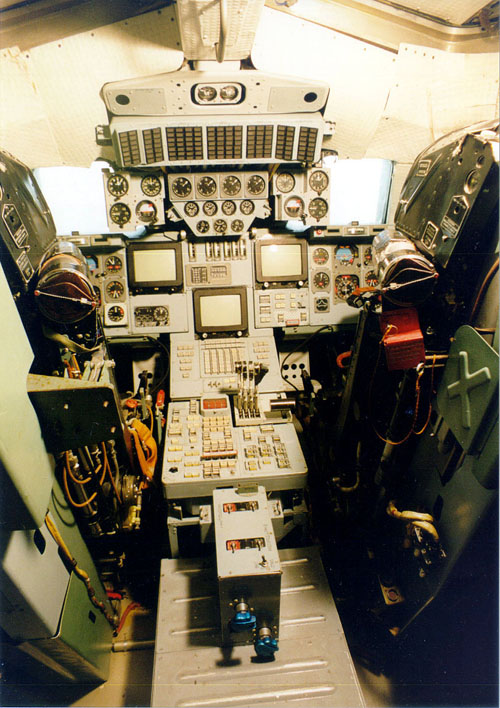
(images credit: Vadim Lukashevich)
Early Concepts of Russian Space Planes
There is some talk about "Spiral" orbital aircraft systems, conceived in the 50s and 60s; see many other images on this page. Some concepts are also shown on this page (in Russian).
However there is definite information and existing models of the "Burya" system, (first concepts appeared in 1954) Read more here.

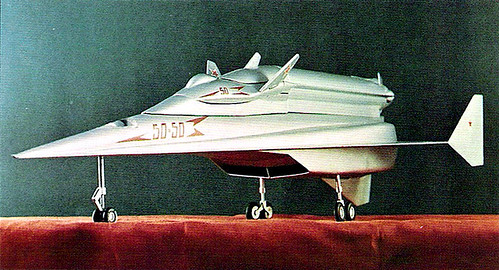
Early "Buran"-like model, made for the aerodynamic testing:

Published in early "popular science-like" magazine in Russia were concept and plans of an orbital plan, similar to the American ideas at the time:

(art by Nikolai Rozhnov, TM)
Various early test of transporting spacecraft and hydrogen tank by air, using customized "Atlant" airplane:
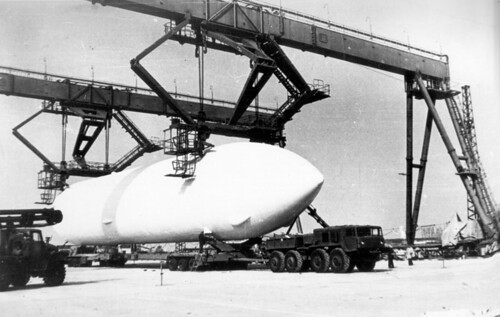
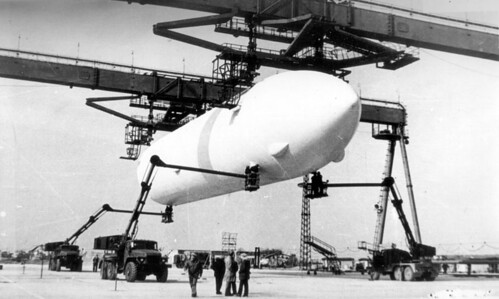


(images credit: V. Burdakov and S. Grachev)
"Energia" launching complex
I have to admit, this shot looks like a frame from a Cold War-era sci-fi movie:
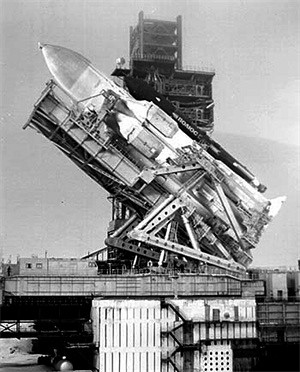
But actual reality (in 1983) was far more fascinating (these great photos are from the book NPO "Energia", see more here)
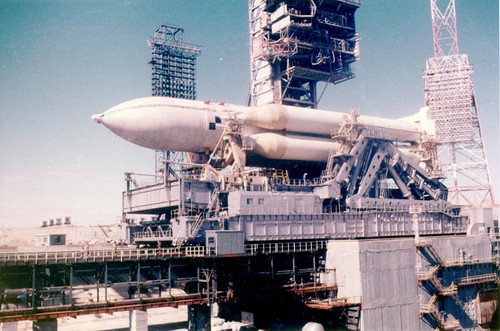
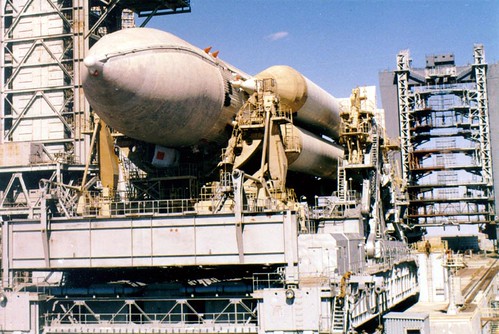

Locomotives pull the shuttle and the rocket to the launching pad for the communist's first flight to Mars (just joking)

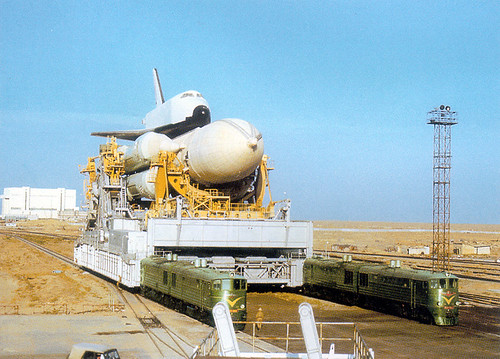
Apparently, bringing out the orbiter horizontally, pulled by locomotives, and then standing it up at the launch pad is much faster than American way of transporting the shuttle already erected.
Energia-M
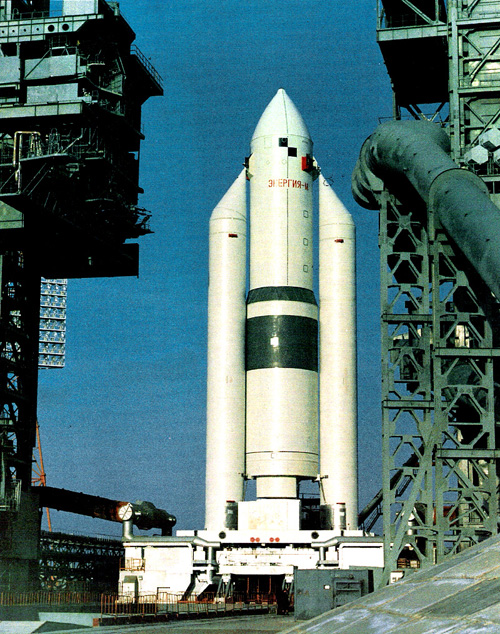
(image credit: "Cosmonautics - A Colorful History" ed. by Dr. Wayne R. Matson)
Do I see some rusted pipes out there? You need more than the usual amount of good luck in Soviet Russia:
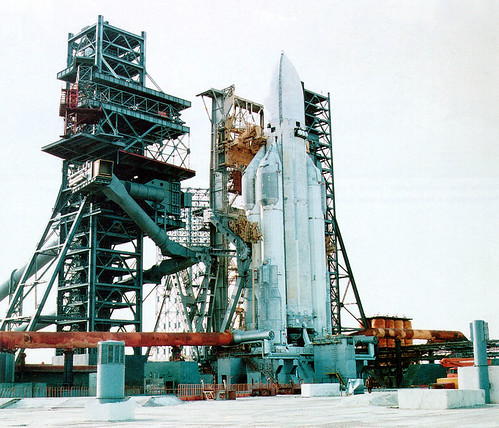
Pre-launch moving of "Buran" and "Energia" on rails


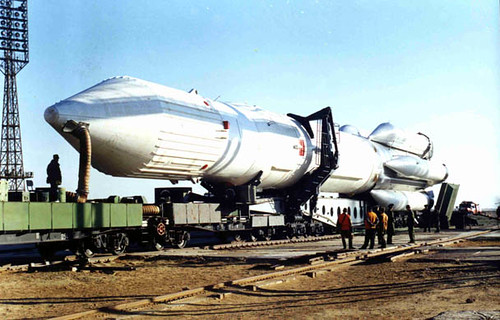

Flight of the "Baikal" (top secret or elaborate hoax?)
The same Buran.ru site maintains that there has been yet another flight of "Buran"-like shuttle, called "Baikal", performed in utmost secrecy on February 4, 1992.
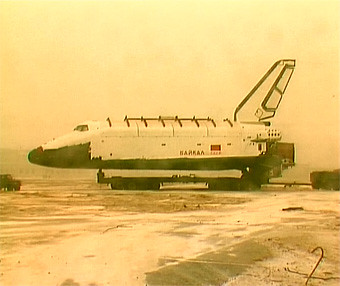
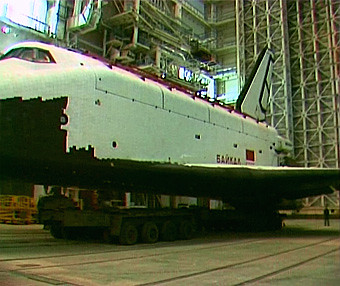
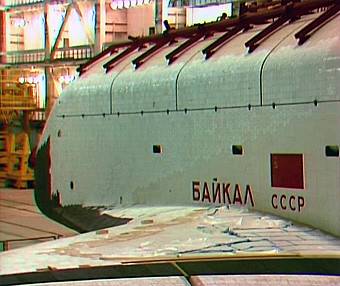
According to them, there is an interesting story associated with the naming of these ships. Everybody knows that "Buran" means a snowstorm. "Baikal", however, was the originally intended name for the program, scrapped in fears that some of the letters will burn out on landing and transform the name into "Baika" (which means a fairy-tale, untrue story), or even worse, into "kal" which means simply "crap". With "Buran"'s successful flight in 1988 these fears were put to rest, so "Baikal" again became a viable monicker. It's also worth mentioning that the projected future ships would also bear stormy names - like "Hurricane / Uragan" and "Typhoon".
Original flight plan included meeting with "Mir" space station, but the ship did not go all the way into orbit. There were problems with stabilization and at 100 km altitude "Baikal" was turned back and successfully landed, ending its 22-minute flight.
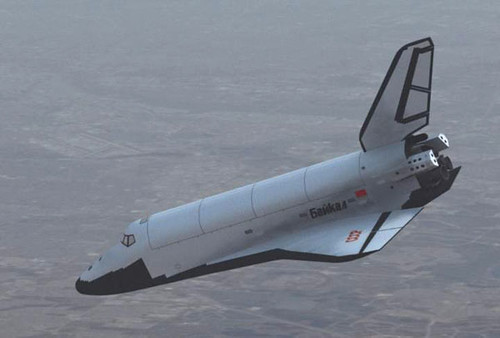

The following two pictures are simulated:

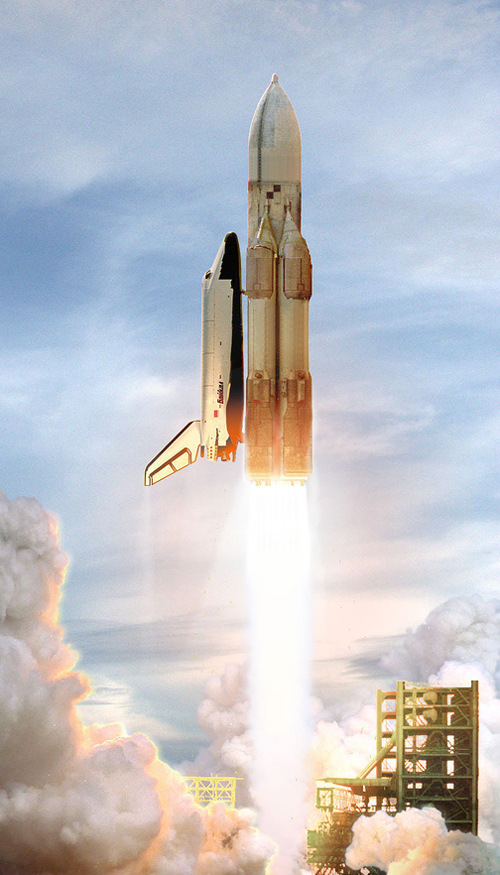
(images credit: Vadim Lukashevich)
There is a healthy dose of controversy surrounding these facts, bearing in mind the utmost secrecy of the attempt. However, even if the flight did not actually take place, the program continued well into the 90s and amazingly, was not even officially closed... just abandoned. You see, it takes some significant funds to properly mothball/close the program, and of course all the funds were already gone.
The "Buran" program had a chance of resurrection in 2003, when all US shuttles were grounded, but the equipment and infrastructure were already dismantled or re-purposed, leaving the whole the idea in sad abandonment to this very day.
This "Buran" is mothballed in storage, most of the others are effectively destroyed.

The ultimate sad story, I can't look on this without a shudder.
(also see here)
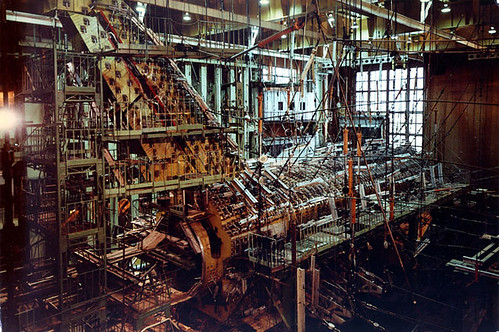
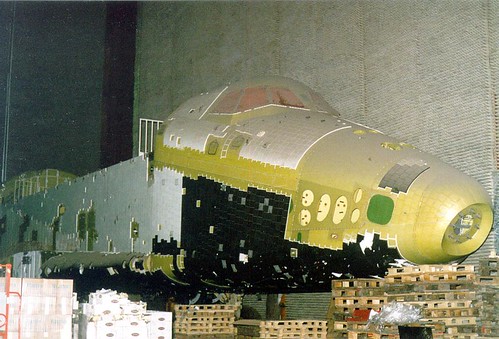
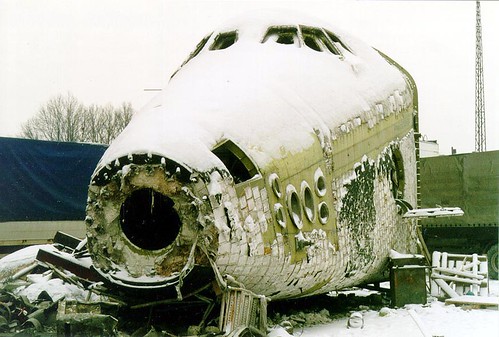
The total spending on this program amounts to $16-17 billion dollars. At least one of the shuttles is used for vibration testing at TZAGI Institute:

The slogan in this picture says "Work with Inspiration", and truly, there is something grand, noble and inspiring in the best efforts of the army of engineers, scientists and pilots, even though the fruits of their labor is seemingly lost.
Permanent Link...

Category: Technology,Space
Related Posts:
Rarely Seen Shuttle Pre-Launch Activities
One Day in Space
Dark Roasted Blend's Photography Gear Picks:










0 comments:
Post a Comment